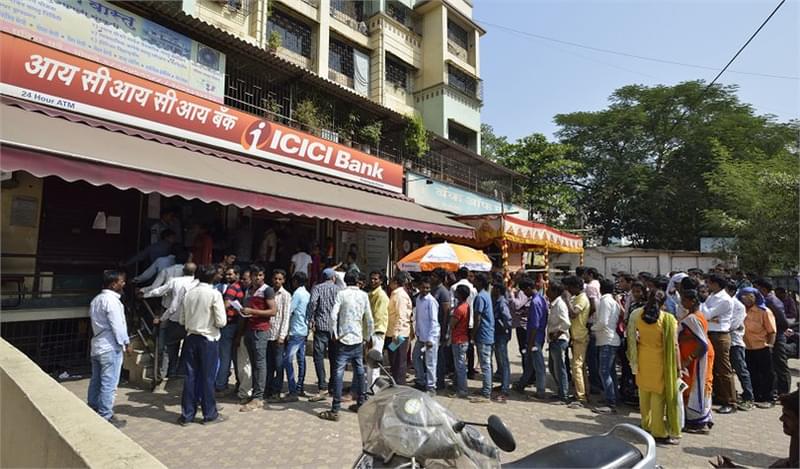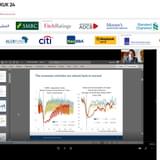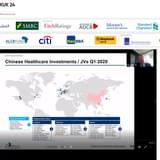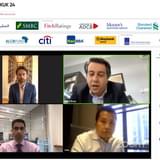Since the RBI amended its bank loan disclosure rules two years ago, pushing the country’s swelling non-performing loan volumes into the limelight, Indian lenders have quite visibly struggled to find ways of resolving these assets in an efficient manger.
Bad loans in the Indian banking sector grew from 2.212% of total loans in 2009 to 9.1% by the end of 2016, according to data from the IMF’s most recent Global Financial Stability Report and the RBI, and the problem is particularly acute in public sector lenders – which together account for more than 71% of the country’s total banking assets; NPLs on state-owned lenders’ books amount to more than 12% of their overall loans, compared with about 4% for private lenders.
The distressed debt pile has become so great that in most instances, banks haven’t provisioned enough capital to deal with the losses, prompting calls for the government to commit to costly capital injections. Analysts at Fitch believe the government would need to inject up to US$10.4bn between now and March 2019 to help cover haircuts alone.
“Current provision levels are inadequate, with a gap of nearly INR6tn (approx. US$9.3bn) between the level of stressed assets in the system and the provisions made. As these stressed assets continue to turn bad, the entire equity base of the banks could be at risk,” analysts at McKinsey & Company explain.
The reasons for the massive divergence will be known to many who follow the sector. Public sector lenders have comparably large exposure to highly leveraged corporates, particularly in volatile commodities-linked sectors or infrastructure-related companies, which often struggle due to cost overruns and projects delays. Many are notorious laggards when it comes to internal risk mitigation and due diligence practices. Most state-owned lenders have struggled to diversify into the retail sectors, and as a result, many have struggled to build strong, sustainable fee income streams. Over the past two years, public sector lenders have regularly shown the lowest ratio of capital to risk-weighted assets among their peers, with negative returns on their assets.
To help address the problem, India’s government passed the Insolvency and Bankruptcy Code in May last year, which consolidates and reorganises the country’s existing ecosystem of laws on the matter. The Code also includes a streamlined restructuring process for corporate delinquencies and aims to expedite the recovery of bad loans by setting a time limit of 9 months for the completion of any resolution proceedings, a refreshing shift from a legacy of multi-year recovery sagas – which more often than not left any collateralised assets worthless by their conclusion.
Nearly a year after the Insolvency and Bankruptcy code was passed and with little improvement in sight, the government moved to strengthen the RBI’s hand with an executive order authorising the Bank to direct banks to initiate an insolvency resolution process in the case of a default under the provisions of the code. The ordinance allows the RBI to effectively step in directly, or specify one or more authorities in conjunction with internally appointed committees, to advise lenders on the resolution of distressed assets.
Three years into the escalating dodgy debt dilemma, analysts are split on the effectiveness of the government’s moves to arrest rising volumes without weighing on credit growth. Despite the fact that India has seen among the deepest and most continuous interest rate cuts over the past 6 years, credit growth has notoriously stagnated, with many pointing to many banks’ unwillingness to boost lending. The November 2016 demonetisation, which created massive amounts of surplus liquidity in the banking system, only exacerbated the situation – creating a huge imbalance between deposits and credit.
“The hope is that these lenders can start taking advantage of the new provisions more quickly than they otherwise would have. I’m not convinced this will happen anytime soon. The real problem is that many public-sector lenders are struggling with inertia. Their risk mitigation strategies are not as robust as they should be, and they operate less efficiently than their private-sector peers,” said one Mumbai-based credit analyst.
As a result, some are concerned that any success in halting bad loan growth in the short term could come at a cost down the road. State Bank of India, the country’s largest lender accounting for two-thirds of the country’s banking assets, recently reported punchier-than-expected quarterly net profit of INR28.1bn (approx. US$430mn), compared with a forecasted INR26.7bn. Alongside the announcement, the bank trumpeted the fact that it was able to claw back its NPL ratio from 7.2% at the end of December 2016 to 6.9% on the back of increased provisions for impaired loans and stronger-than-expected asset growth.
“Asset growth looks good on the surface… But part of the challenge is that SBI, among others, continues to lend to some of these notoriously strained sectors – power companies, metal producers, and others that continue to be hit by problems or delays,” the analyst said.
Wait and See
Others feel the government’s current framework, which mandates each bank to expedite resolution and recovery of bad assets, is too inefficient, and that it should have opted to set up national asset reconstruction companies, or ARCs, instead – much like China and Malaysia did after reckoning with some fairly large real estate bubbles in the 1990s. Under such an arrangement, and with the government’s ability to help ARCs secure low-cost access to capital needed to acquire distressed assets, banks could sell their dodgy loans to these ARCs, which concentrate all of the skills and expertise necessary to resolve them, in one or two transactions – letting lenders get on with, well, lending.
But this would create new regulatory questions the government – for now – seems unwilling to address, and, potentially, foster moral hazard. Under current legislation, financial institutions can sell NPLs to ARCs on payment of a part of the acquisition cost, with the remaining cost deferred and payable from the amount realised from resolution of the NPLs for up to 8 years after the assets were acquired. As such, the deferred part is akin to quasi-equity, and ARCs are permitted to charge a management fee for the asset resolution on the outstanding value of the acquisition cost; recovery of the management fee takes a priority over recovery of the acquisition cost – at least until the government changes the rules around fee structures, argues Rajendra M. Ganatra, Managing Director and Chief Executive Officer of India SME Asset Reconstruction Company Limited.
“This potentially causes asset manager’s moral hazard. The seller bank’s anxiety to minimize provisions on the NPLs also tends to fuel the asset manager’s moral hazard,” Ganatra argues in a recent study published in the International Journal of Applied Business and Economic Research. He found that the linking of management fees to 100% outstanding NPLs’ values induced ARC moral hazard when the income from management fee constituted major part of the ARC’s earnings, since ARCs could just spread recoveries to expedite and enhance management fee at the cost of the banks that sold them their NPLs. “It is matter of time before the regulator will control the management fee.”
Krishnan Sitaraman, a Senior Director at CRISIL Ratings, a subsidiary of S&P in India, told Bonds & Loans that all of the public-sector banks tracked by the rating agency are on negative watch, and that it could take a year for the new rules to kick-in, practically speaking.
“It was very important for the government to provide clarity on how to take advantage of the new resolution framework, but it will take time to see results. We expect slippages to be reduced as lenders bolster their risk management techniques and credit monitoring processes, but while the pace of the build-up is likely to fall, volumes of NPLs are going to continue rising until 2019,” Sitaraman said.
“To some extent, we are in ‘wait and see’ mode,” he concluded.









